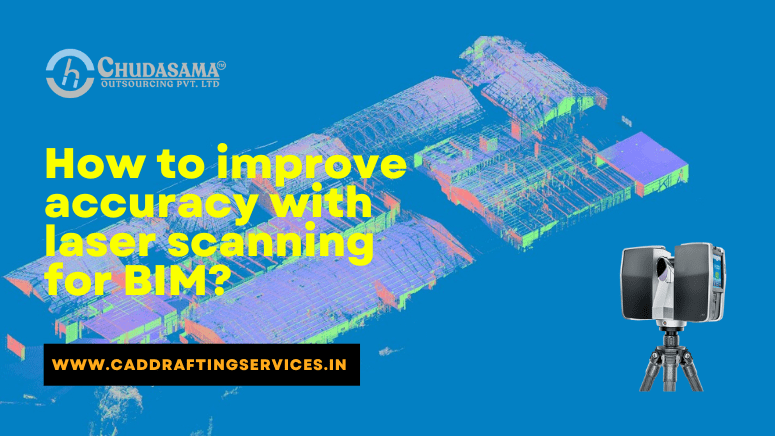The technique of scanning current circumstances and using that information to produce an exact as-built model of such circumstances is known as Scan to BIM Modeling. A usual technique involves taking measurements in the area and merging them with the most recent documentation to make an as-built model.
This manual procedure may result in obsolete and erroneous modeling, which might have negative effects on the project’s overall timeline, including delays and expensive rework. Clients may collect very precise laser data of the current conditions using a 3D Laser Scanner. After that, you may utilize this Point Cloud to Revit process to precisely build a Revit model.
The Laser Scanning technique is a procedure that requires line-of-sight. In order to estimate the lengths of all the surfaces the laser beams bounce off, the scanner throws out laser beams that reflect back to the device. Each point is recorded by the scanner, which then colors them according to the images it takes during scanning.
Understanding how you will utilize the laser scanning along with what you are aiming to accomplish with this procedure is crucial for an effective Laser Scanning assignment. The field team will be able to select the point cloud density by knowing the required results.
Point clouds are Used in the BIM Process
The majority of businesses prefer at least one output to be laser information in the Autodesk Summary format. The laser scan may be added to different applications using this deliverable. The point cloud basically serves as the desired ultimate output for certain businesses. To create the present conditions, these companies will model using this laser scan.
Due to today’s busy schedules and high staff usage, many businesses outsource their 3D modeling requirements, which enhances the process from Laser Scan to 3D Model. Companies may get or produce a 3D model from the collected point cloud by outsourcing the tasks of scanning and modeling. This BIM Outsourcing frees up internal resources, enabling your internal staff to produce more work and acquire more clients.
Different Areas Where Scan to BIM Services Used
- Renovation and Restoration: Making a precise and comprehensive as-built model can help you prevent mistakes that might not be apparent until the building stage. It can be costly as well as tedious to fix these mistakes during the building process.
- Construction: As the structure is being constructed, you may employ scanning to make a record of it. On a daily basis, project managers may track this development. Scanning can be used to find systems in walls or ditches prior to they get covered up. You may check for differences by scanning and comparing the schematic model to the area’s actual structure.
- Facilities: The majority of individuals lack accurate and current models of their facilities. Making better planning choices is made possible by having this knowledge. To improve the operations of additional facilities, you can incorporate data into these models.
Advantages of Scan to BIM Modeling Services
A more effective, precise, and thorough way to build a model for important data that may be registered is provided by scanning devices. Here are the advantages of using 3D Scanning to build an extensive 3D Revit model with consumer information.
- Efficiency: Construction delays are reduced and the designing procedure may move more quickly by integrating 3D scanning into the Building Information Modelling procedure. Due to the scan information acquired while a natural 3D scan, designers and other key stakeholders will be capable of making choices without awaiting on-hand evaluations or information from a different group. They will also have direct cooperative access to crucial data.
- High-Quality: Development in the AEC industry is being driven by the desire for assurance of quality and dependability. Once 3D laser scanners are employed in place of conventional manual measuring techniques, the accuracy of the resulting BIM model is significantly increased, which is very advantageous. Revit model is created from the information, leading to increased accuracy and wiser decisions. With such accuracy, construction challenges and alteration orders which have a direct influence on the profitability of your job are practically eliminated.
- Cost-Effective: You might make a more alluring expenditure plan for your tasks because BIM site design requires better precision. Laser inspection does away with the necessity for manual examination, which reduces the expense of recruiting extra staff.
- Safety: Manual surveying may require negotiating across hazardous terrain, endangering surveyors’ safety. Drones are used by Scan to BIM to gather data from these dangerous terrains without endangering people.
Conclusion
By using different procedures and technologies, Scan to BIM Modeling Services will broaden its scope. The method that designers, surveyors, contractors, architects, and other experts view design, building, and refurbishment is transforming as a result of it. Point Cloud to BIM will alter current workflows to minimize higher costs, and lengthy timelines, and offer quality by linking procedures, individuals, information, and technology.



